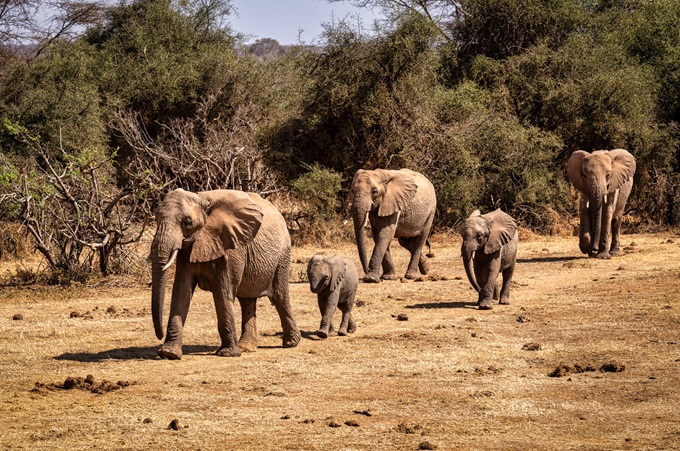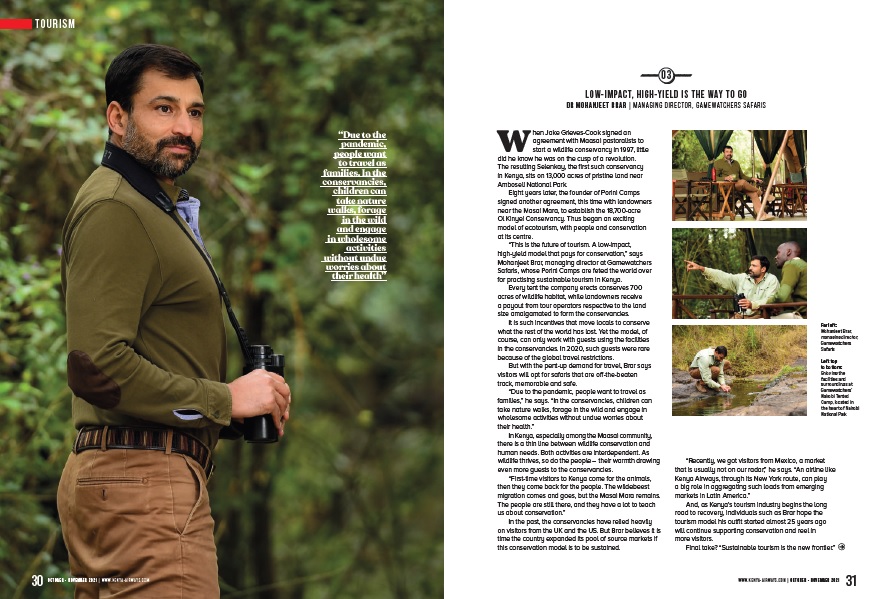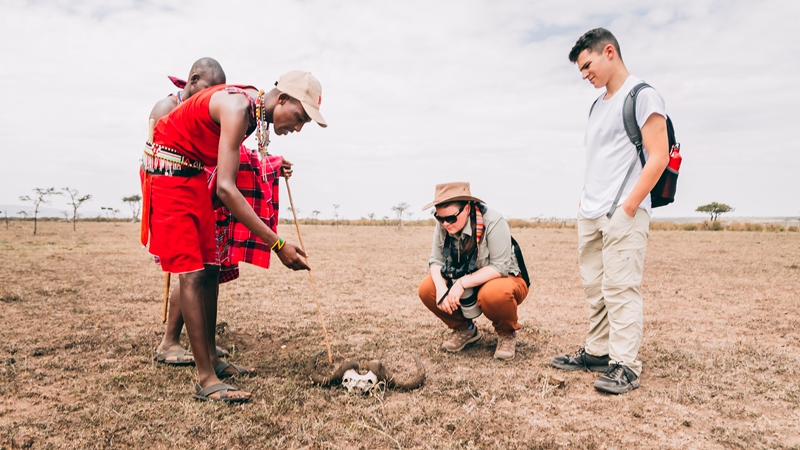
Clinton Richardson spends time watching the magnificent elephants on a game drive from Porini Camp …
* * * * * * * * * * * * * * * * * * * * * * * *
This series of blogs will take you on Clinton’s safari in Kenya as he travels from Atlanta (USA) to Nairobi National Park, Selenkay Conservancy (Amboseli), Ol Pejeta Conservancy (Laikipia) and Olare Motorogi Conservancy (Maasai Mara). Let’s join him on his journey as he shares his insights into the conservancies, Porini Camps and the people (and animals!) that he meets along the way. All images are from Clinton’s TrekPic.com photo site. Blog entries are from his Venture Moola blog at ReadJanus.com.
* * * * * * * * * * * * * * * * * * * * * * * *
Imagine your foot was redesigned to add inches of thick padding under your heel bone that enabled you to walk silently whenever you wanted. Kind of like a super power. You and your similarly equipped friends could go about your way without making a sound. Then add to that the ability to communicate at very low frequencies without opening your mouth. Say that these sounds could travel for miles and be heard by others like you. Like a whale, your messages could cover vast distances at the speed of sound.
What if your senses were so well developed that you could smell water more than a mile away and sense thunder at great distances from vibrations in the soil? And what if those senses were in an appendage that contained tens of thousands of muscles and not a single bone. An appendage with the strength to lift 700 pounds and so flexible that it was capable of lifting a single blade of grass?
You would be remarkable. You would be part a “memory” (or herd) of bright, caring, communicative and powerful individuals. You would be a perfect tree eating machine. A gardener, of sorts, for the African wild.
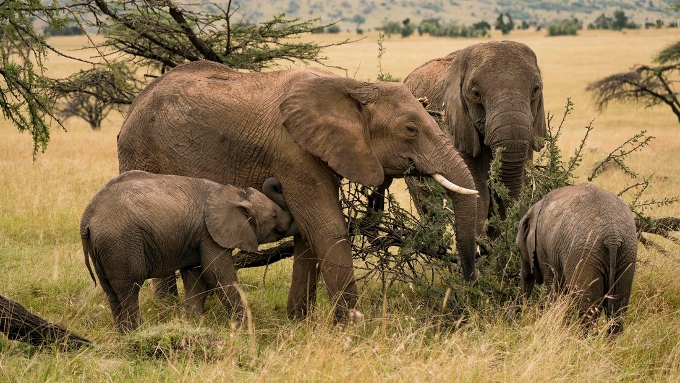
Eating a Fallen Tree
Our travels through Africa showed us much of the handiwork of these gardeners. Mostly, swaths of small trees and bushes pushed over, pulled up and partially eaten.
Then one afternoon we got to watch the process with a small memory of elephants on the Maasai Mara savanna. In the image above you can see the youngest one is still nursing and not participating in the green feast. The rest are consuming a tree they have just pushed over.
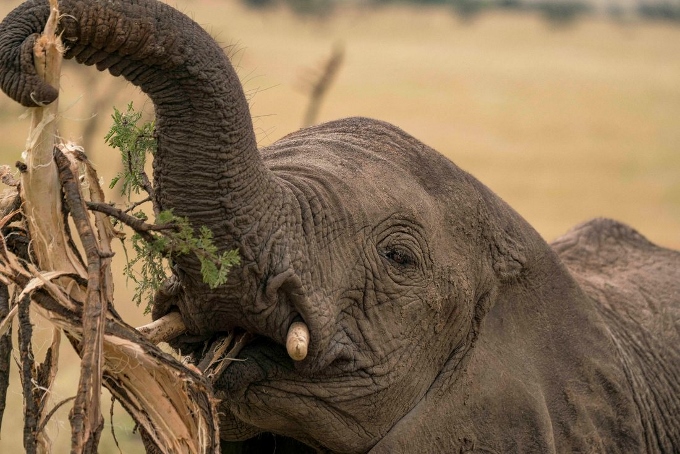
Then, just above, a younger one is chewing on a branch. And then below, pushing on the partially decimated tree to get at a chosen morsel.
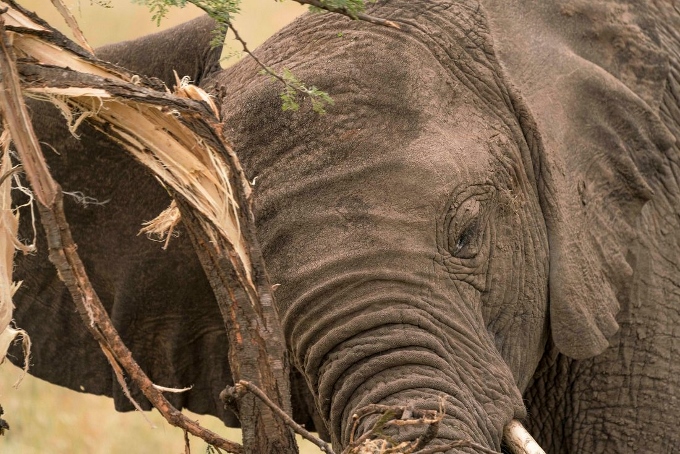
The trunk, obviously, is essential to eating a tree and to much of everything else the elephant does. It is used to gather water, express affection and to give a young one a needed nudge.
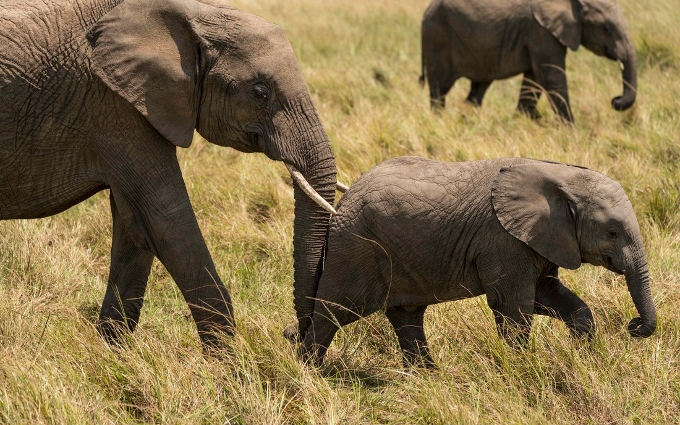
But consider what a challenge it must be to learn to use a trunk. Elephant babies are born with a short recessed trunk that grows to full extension in just a few days. With thousands of muscles and no bone, it cannot be easy to learn to control this all important appendage.
The images below show just three skills necessary to live with a trunk.
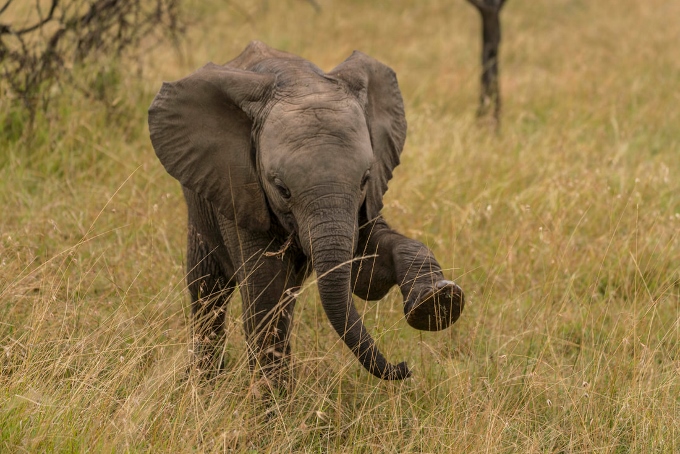
First, you have to learn to avoid stepping on it.
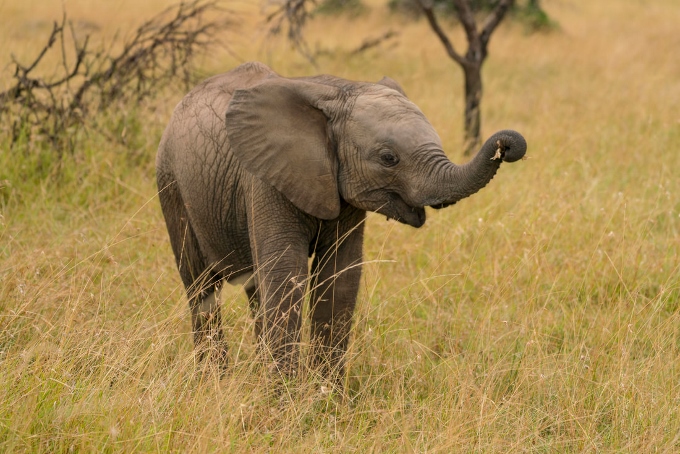
Then, to lift it and hold something.
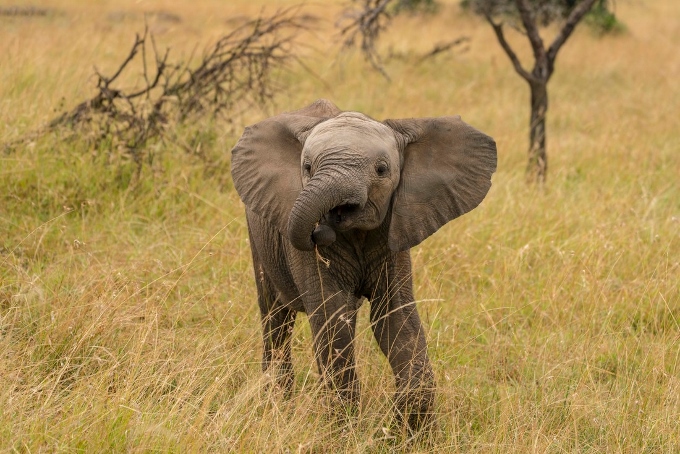
Learning to twist it is essential to many tasks like grasping a twig..
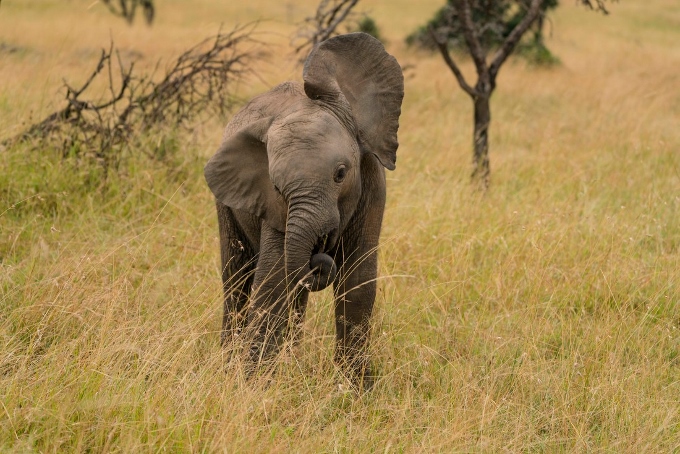
But, in the early learning stages sometimes a full body twist to get the trunk just right.
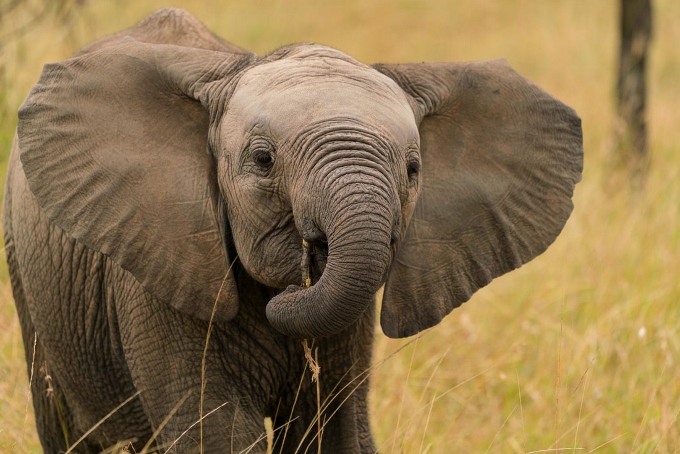
Success, however, can be it’s own reward as this youngster brings a twig to its mouth.
But sometimes, the stress of learning to use a trunk becomes too much. And, just when you need it most, your sibling can help you give it a rest.
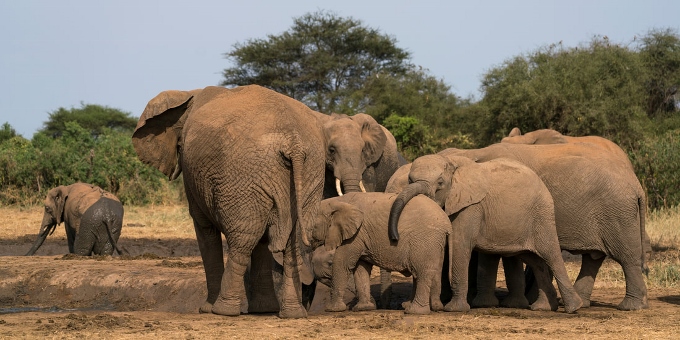
First published 31 Jan 2019. All photos and text are © Clinton Richardson. All images are from his galleries at TrekPic.com
About Clinton Richardson
Clinton Richardson has been writing and taking photographs for decades. His books include the critically acclaimed 5th edition Richardson’s Growth Company Guide 5.0 and the award-winning book about social media and ancient coins called Ancient Selfies. His images, including images taken on his trip, can be viewed at TrekPic.com. His Venture Moola blog can be viewed at Readjanus.com.
See Other Blogs in this Series:
- Safari Countdown: Prepping for Kenya
- Safari 1: The Hunt
- Safari 2: Off to Nairobi
- Safari 3: Tented Camps & Conservancies
- Safari 4: Passports in His Underpants
- Safari 5: Night Lions to Amboseli
- Safari 6: Amboseli to Selenkay
- Safari 7: Pooh on You
- Safari 8: Eaten by a Lion?
- Safari 9: The Maasai
- Safari 10: On the Move
- Safari 11: Crash on the Grass
- Safari 12: Sundowner Surprise
- Safari 13: Stalag Panzee
- Safari 14: Bump in the Night
- Safari 15: Dry Season Showers
- Safari 16: How Many Wives Would You Like to Have?
- Safari 17: Distracting His Highness
- Safari 19: Hunting with Children
- Safari 20: Blue Jean Symphony
- Safari 21: African Nights
on Friday 01st February 2019 at 10:04



